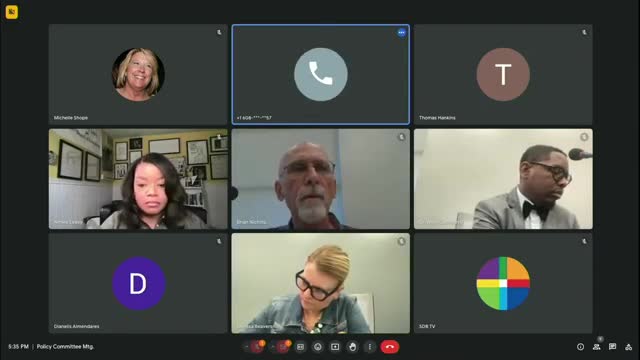Heated Debate Erupts Over Gender Pronoun Policy
July 04, 2024 | Beloit School District, School Districts, Wisconsin

This article was created by AI summarizing key points discussed. AI makes mistakes, so for full details and context, please refer to the video of the full meeting. Please report any errors so we can fix them. Report an error »

In a recent meeting of the School District of Beloit Board of Education, members engaged in a heated discussion regarding the use of gender language and pronouns in district policies. The conversation was sparked by concerns over inclusivity and the potential implications of removing gender identifiers from official language.
Board member Levy expressed strong opposition to the idea of erasing gender from educational discourse, labeling it as \"disgusting\" and \"dangerous.\" Levy argued that such a move could lead to further erasure of critical identities within the educational community. This sentiment was echoed by other board members who emphasized the importance of recognizing all students and ensuring that no one feels marginalized.
Conversely, some members advocated for a more inclusive approach, suggesting that using gender-neutral pronouns like \"they\" and \"them\" could encompass all identities without excluding anyone. Board member Hankins pointed out that the goal should be to create a language framework that is inclusive of all students, while also avoiding the pitfalls of an overly complex system that could inadvertently leave some identities unrecognized.
The discussion also touched on the challenges of translating gender-neutral language into other languages, particularly Spanish, which requires gendered nouns. This raised questions about how to maintain inclusivity across different languages while adhering to grammatical rules.
As the meeting progressed, a proposal was made to formalize a policy that would use \"they,\" \"them,\" and \"their\" as inclusive pronouns in district communications. However, concerns were raised about the procedural appropriateness of discussing a proposed policy that had not been officially noticed on the agenda. Board member Levy voiced apprehension about what she termed a \"policy ambush,\" emphasizing the need for transparency and proper procedure in policy discussions.
Despite the contention, the board ultimately voted to move the discussion to the full board for further consideration, with the understanding that the policy would be refined and potentially returned to the policy committee for additional work. The outcome reflects an ongoing commitment to inclusivity within the district, while also highlighting the complexities and sensitivities involved in navigating gender language in educational settings.
Board member Levy expressed strong opposition to the idea of erasing gender from educational discourse, labeling it as \"disgusting\" and \"dangerous.\" Levy argued that such a move could lead to further erasure of critical identities within the educational community. This sentiment was echoed by other board members who emphasized the importance of recognizing all students and ensuring that no one feels marginalized.
Conversely, some members advocated for a more inclusive approach, suggesting that using gender-neutral pronouns like \"they\" and \"them\" could encompass all identities without excluding anyone. Board member Hankins pointed out that the goal should be to create a language framework that is inclusive of all students, while also avoiding the pitfalls of an overly complex system that could inadvertently leave some identities unrecognized.
The discussion also touched on the challenges of translating gender-neutral language into other languages, particularly Spanish, which requires gendered nouns. This raised questions about how to maintain inclusivity across different languages while adhering to grammatical rules.
As the meeting progressed, a proposal was made to formalize a policy that would use \"they,\" \"them,\" and \"their\" as inclusive pronouns in district communications. However, concerns were raised about the procedural appropriateness of discussing a proposed policy that had not been officially noticed on the agenda. Board member Levy voiced apprehension about what she termed a \"policy ambush,\" emphasizing the need for transparency and proper procedure in policy discussions.
Despite the contention, the board ultimately voted to move the discussion to the full board for further consideration, with the understanding that the policy would be refined and potentially returned to the policy committee for additional work. The outcome reflects an ongoing commitment to inclusivity within the district, while also highlighting the complexities and sensitivities involved in navigating gender language in educational settings.
View full meeting
This article is based on a recent meeting—watch the full video and explore the complete transcript for deeper insights into the discussion.
View full meeting
